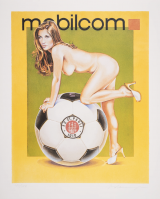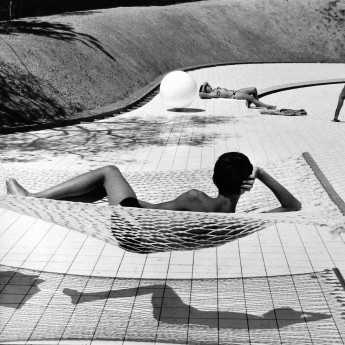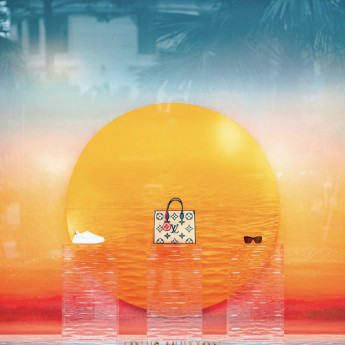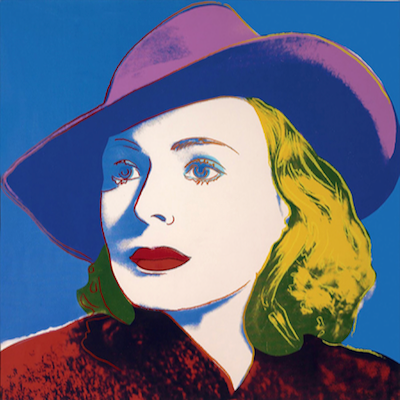
Details
Artist
Styles
Signed in pencil in the artists hand on the lower right border, and numbered on the lower left border // Girl on a Zebra by Mel Ramos, created in 1981, is a lithograph that showcases Ramos's signature pop art style, blending realism with playful eroticism. In this limited edition print, a woman sits confidently on a zebra, posed against a minimalist beige background. The juxtaposition of the woman’s smooth skin with the zebra’s bold black-and-white stripes highlights a striking contrast that emphasizes both form and texture. Ramos's work often explores themes of beauty, desire, and the intersection of fantasy and reality, and this piece is no exception. Signed and numbered in pencil, this print is a classic example of Ramos’s approach to glamour and pop culture iconography, making it a sought-after collectible.
Girl on a Zebra, 1981
form
Medium
Size
50.8 x 43 cm
- Inches
- Centimeters
Edition
Price
- USD
- EUR
- GBP
Details
Artist
Styles
Signed in pencil in the artists hand on the lower right border, and numbered on the lower left border // Girl on a Zebra by Mel Ramos, created in 1981, is a lithograph that showcases Ramos's signature pop art style, blending realism with playful eroticism. In this limited edition print, a woman sits confidently on a zebra, posed against a minimalist beige background. The juxtaposition of the woman’s smooth skin with the zebra’s bold black-and-white stripes highlights a striking contrast that emphasizes both form and texture. Ramos's work often explores themes of beauty, desire, and the intersection of fantasy and reality, and this piece is no exception. Signed and numbered in pencil, this print is a classic example of Ramos’s approach to glamour and pop culture iconography, making it a sought-after collectible.
- Recently Added
- Price (low-high )
- Price (high-low )
- Year (low-high )
- Year (high-low )
What is pop-art?
Pop Art is an art movement that began in Britain in 1955 and in the late 1950s in the U.S. It challenged traditional fine arts by incorporating imagery from popular culture, such as news, advertising, and comic books. Pop Art often isolates and recontextualizes materials, combining them with unrelated elements. The movement is more about the attitudes and ideas that inspired it than the specific art itself. Pop Art is seen as a reaction against the dominant ideas of Abstract Expressionism, bringing everyday consumer culture into the realm of fine art.




















































